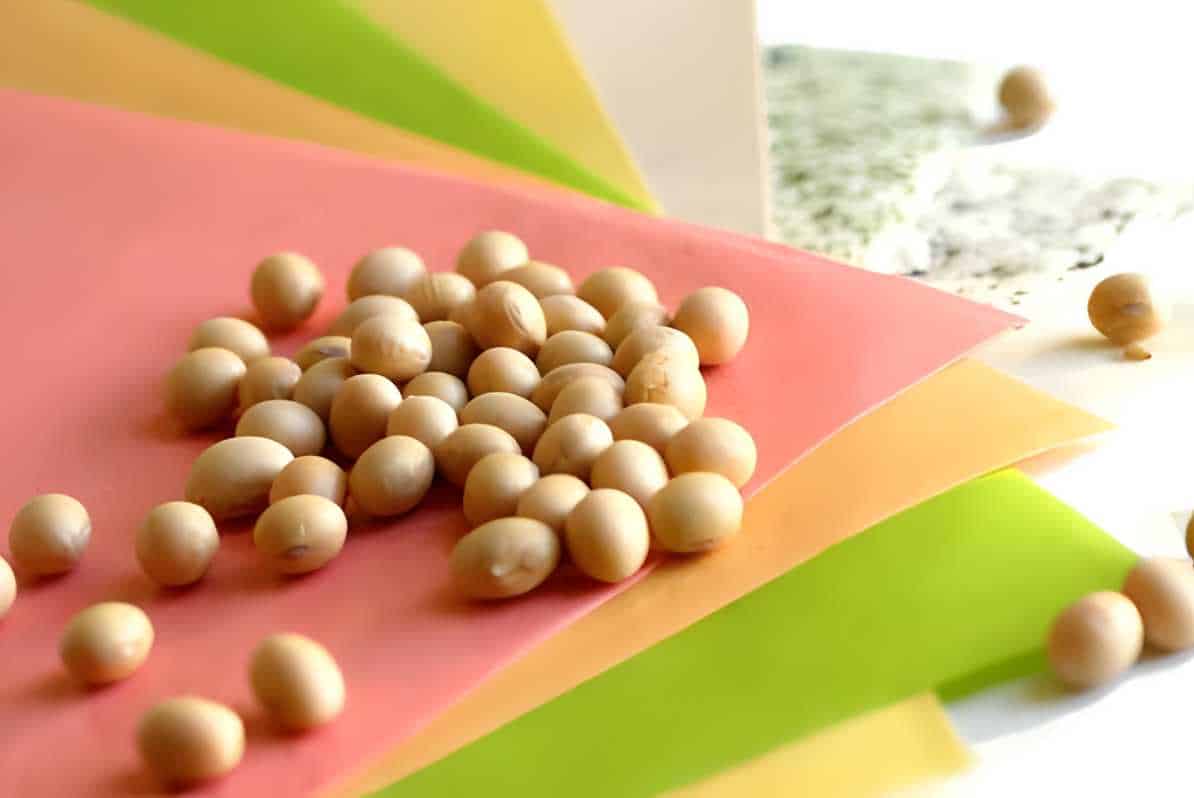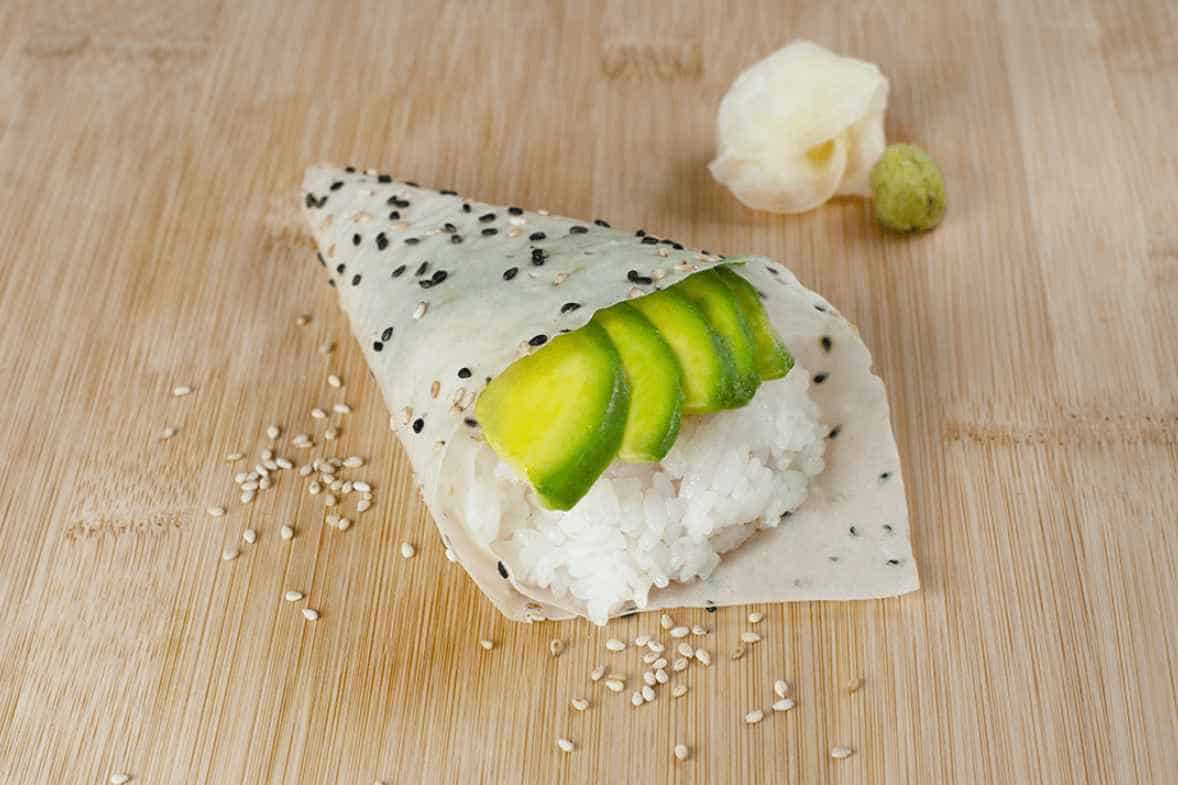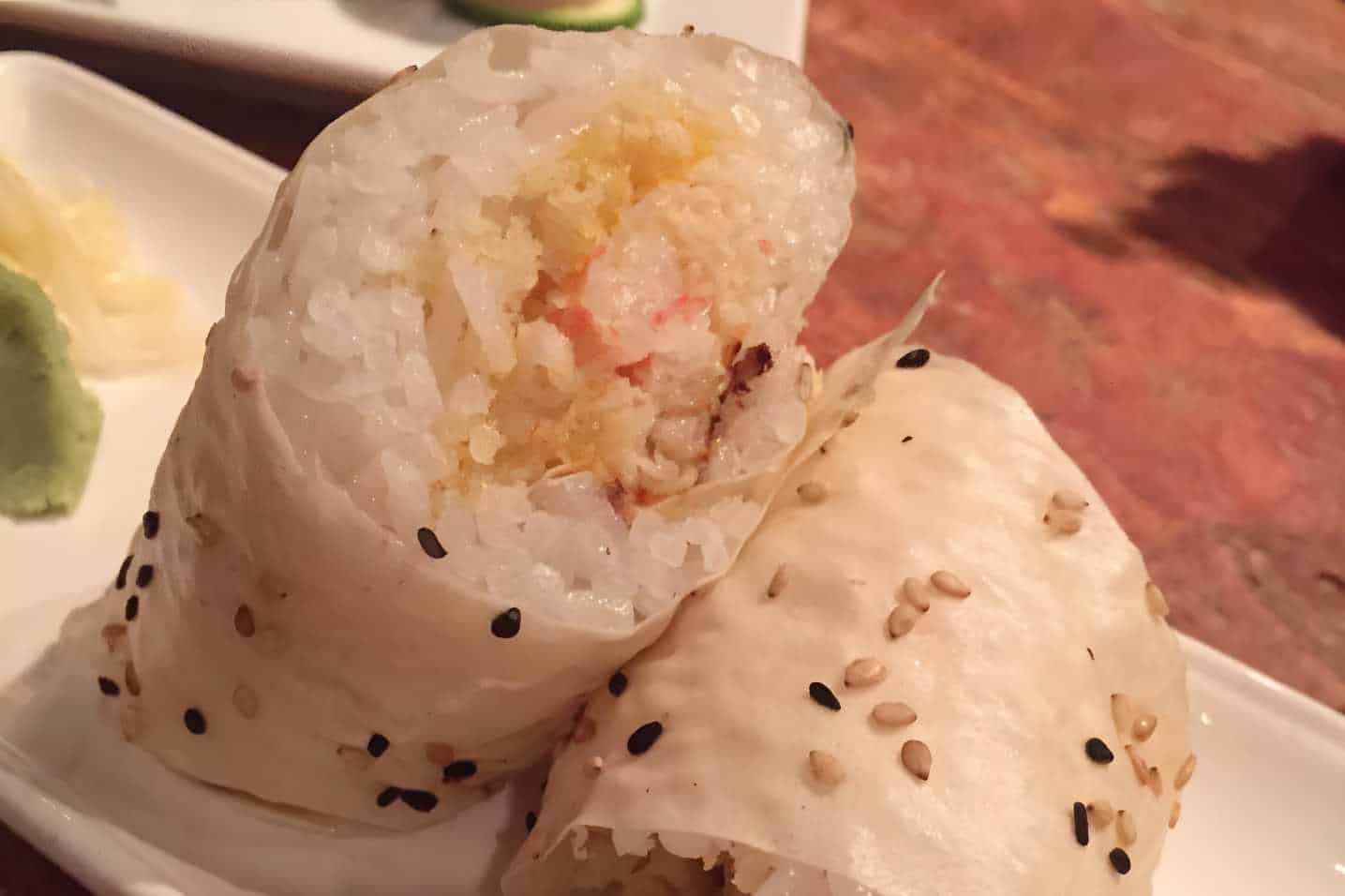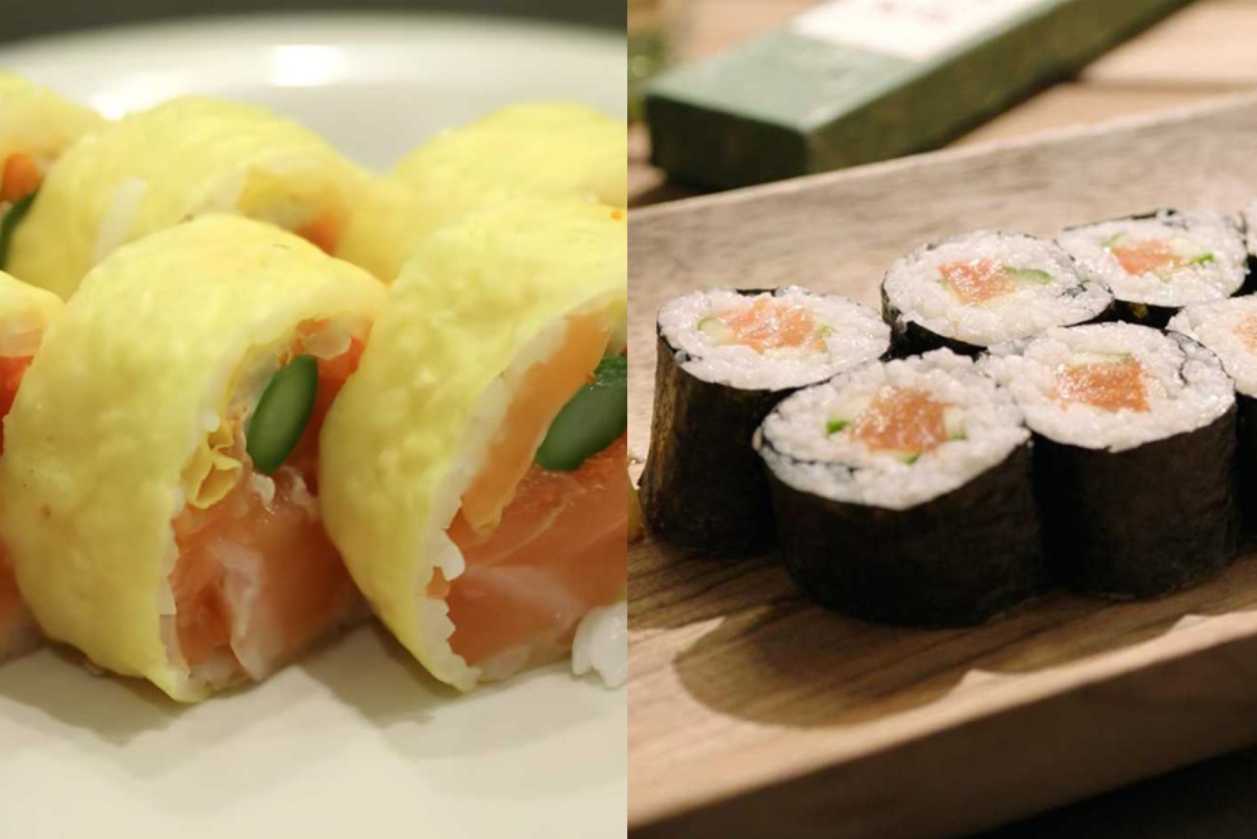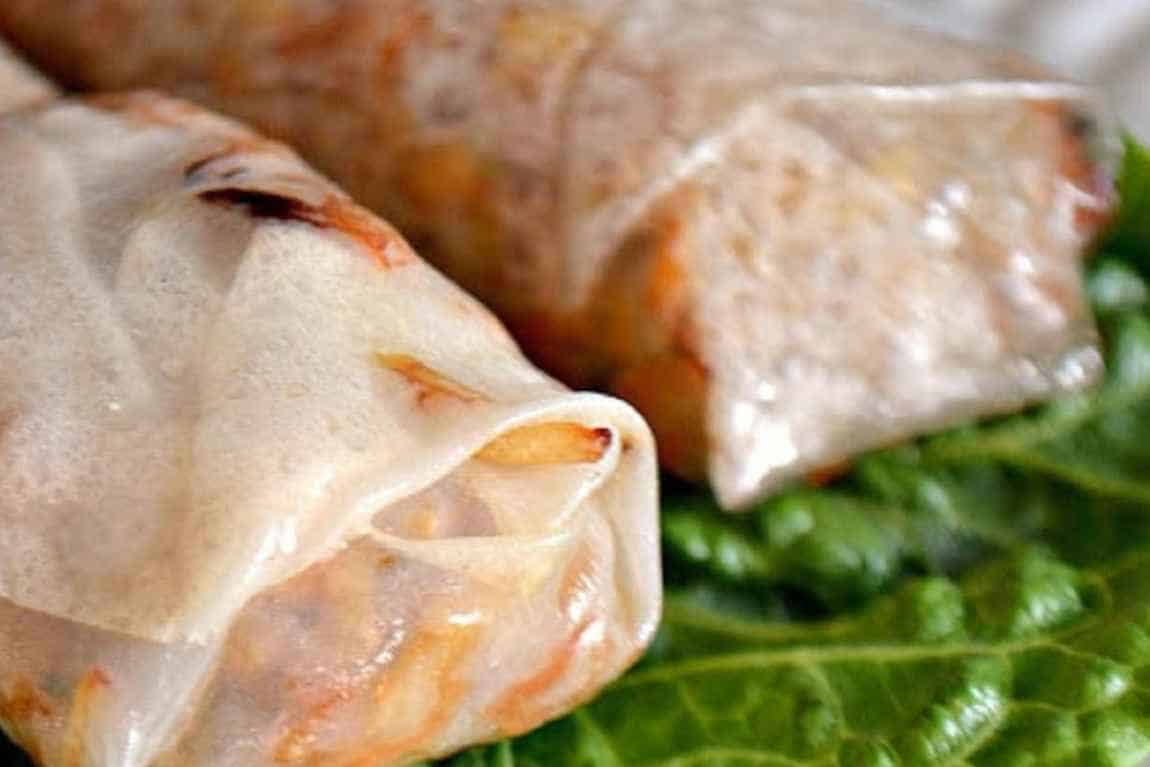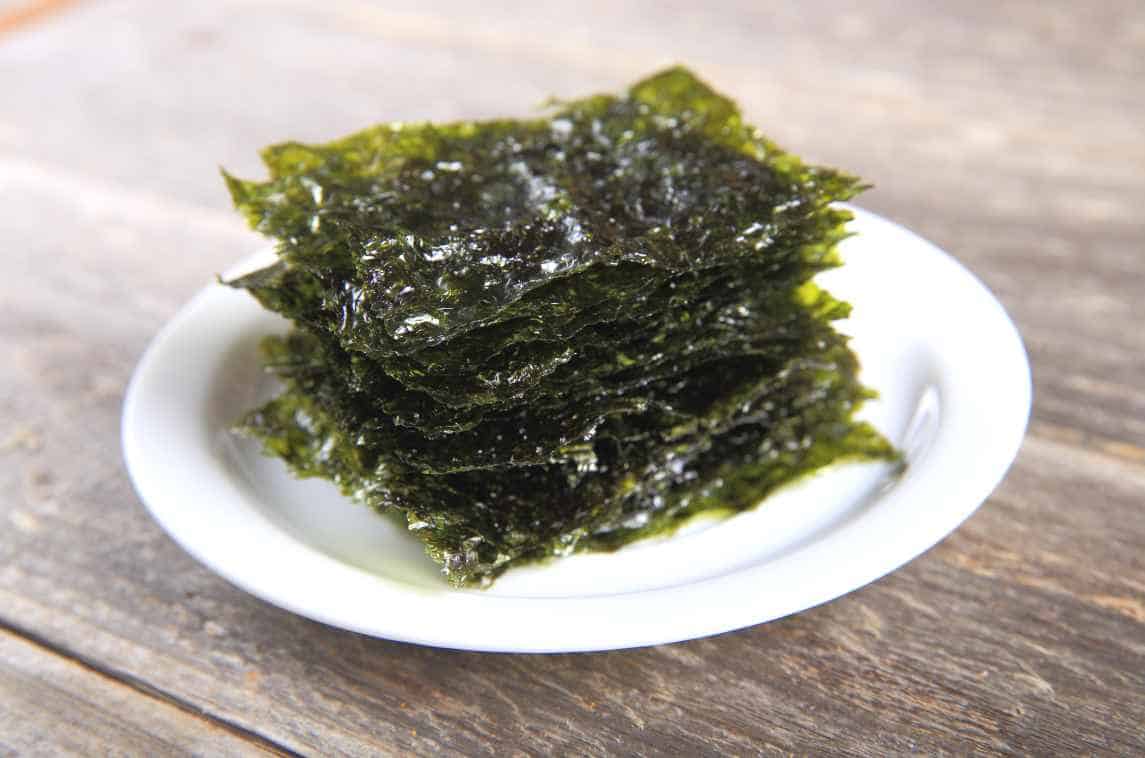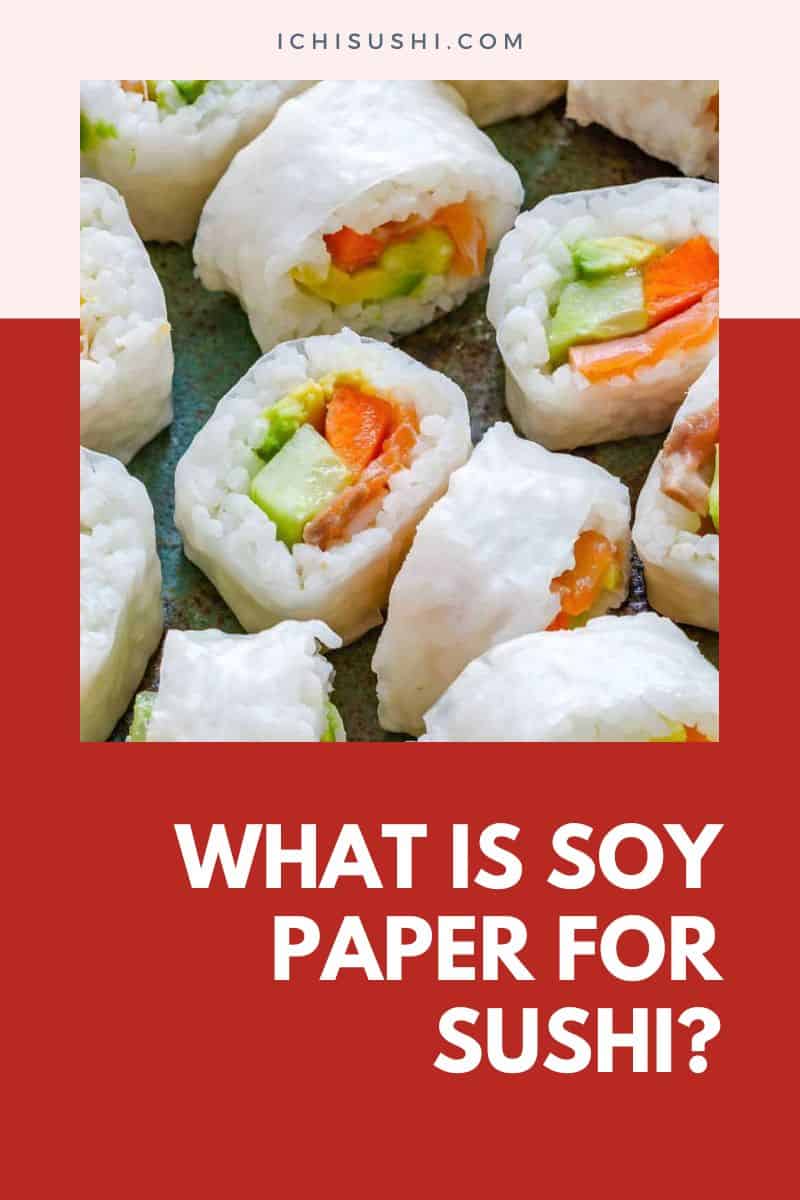Sushi rolls are visually striking. The various colorful fillings blend nicely. The edible component that holds them all together also adds to the beauty of sushi.
Some are wrapped in soy paper, while others are encased in nori sheets. So, what is soy paper for sushi and soy paper vs. Seaweed?
What is soy paper?
When preparing a sushi roll, soy paper is sometimes used to “wrap” the sushi. You see it on the outside of a sushi roll. This is the tasty paper that everything is wrapped in.
Soy paper is edible as a sushi wrap. Because it is mainly made of soybeans, soy paper has a mild flavor. There isn’t a lot on it to entice your taste buds. This is why so many different components are frequently added.
However, this is a huge bonus when it comes to creating sushi. As a result, it has no fishy or strange odor. It makes you savor and enjoy the freshness of the components.
Soy paper makes an excellent option for the often-used seaweed wraps in sushi production. It allows you to taste the sushi rather than the wrapper.
Soy paper, usually contains a variety of components, not only soy. These include compressed soybeans, soybean oil, and soy flour. You can also find more ingredients like sesame seeds. Ingredients may vary based on the maker or the method of production.
Manufacturers blend the components into a thin soy paper through heavyweight compression. The elements are combined, crushed, and pressed into sheets of a paper-like material using weight. It’s similar to how you roll out pizza dough.
Numerous well-known companies flavor the sushi wrappers to improve their attractiveness. It’s advisable to double-check the manufacturer’s ingredient list on the packaging.
Soy papers are the perfect option! You won’t spoil your cravings through subtle tastes and aroma in your delicious sushi.
Do you enjoy sushi for its artistic value? Soy paper is ideal because it comes in a variety of colors. Some are green, pink, yellow, orange, and natural.
Furthermore, some companies allow you to have your pictures printed on the soy sheets using edible ink. How would you like that?
Soy paper comes in vibrant colors from natural food and plant extracts. These are devoid of artificial flavors and colors.
There are several potential problems when utilizing soy paper for the first time. Making the soy paper adhere to the rice is a crucial step.
In addition, soy paper is susceptible to high temperatures. So, after each use, carefully seal it and put it somewhere dry. Otherwise, the sheets will cling together. You’ll end up with a bundle of useless paper.
Nutritional Benefits of Soy Paper
Gluten-Free
If you’re looking for a gluten-free option, soy wrap is a terrific way to have it. Because the soy wrap is made from soybeans, it is gluten-free.
Low in Carbs
Each soy wrap has just about 1-2 grams of carbohydrates, which is exceptionally low. It’s a fantastic, safe match for those following a ketogenic diet.
Soy paper has no cholesterol, trans fat, or saturated fat and is low in carbs. It is minimal in calories, with only 15-20 calories per soy wrap.
Differences Between Soy Paper and Seaweed
Nori or seaweed sheet is likely recognizable to sushi fans. But there are other alternatives to nori, such as soy paper. This wrap is less frequent in sushi establishments.
But how do soy paper and nori compare? Are they interchangeable? To help you choose between soy wrap and seaweed sheet, check the table below for a quick comprehensive.
| Feature | Soy Paper | Seaweed |
| Description | A soybean sheet that you can use to wrap a variety of dishes | A sushi-wrapping sheet made of edible seaweed |
| Appearance | Thin sheets in a range of colors | Delicate, dark green sheets |
| Flavor | Odorless and tasteless | Contains a mild ocean flavor and smell |
| Uses | Desserts, sushi, and spring rolls | Sushi |
| Expiration | If properly stored, 3 weeks once opened | If properly preserved, 2 weeks after opening |
| Nutrition | Less in carbohydrates, but more calories than nori | Very nutritious and rich in fiber, Omega-3, and magnesium |
| Accessibility | Online or specialty Asian shops | Online or Asian section in supermarkets |
Appearance
As mentioned above, soy paper comes in a variety of hues. This is one advantage of using it. There are white, green, pink, orange, and yellow soy papers.
Many companies employ natural colors such as turmeric for yellow paper. They use paprika for orange and spinach for the green paper. If you shun away from artificial ingredients, make sure you read the label.
On the other hand, nori has a dark green color. This is due to the usage of red algae from the species Pyropia. You should use nori if you prefer your sushi to look authentic.
Flavor
As stated above, soy paper is flavorless and odorless. It’s a perfect solution for fussy eaters. It also allows the other items to take center stage on the plate. The texture of the paper is thin and flexible, similar to rice paper rolls.
In contrast, some individuals dislike the mild “fishy” scent and flavor of seaweed paper. It has a thin texture that is also slightly crunchy. Not all will appreciate sea elements. But most sushi fans believe that seaweed is the greatest tasting sushi wrap.
Culinary Uses
You can make sushi with both soy paper and seaweed sheets. They can readily fold up without breaking.
However, you can use soybean paper for more than just spring rolls. You can use it to make some dumplings. You can also wrap sweet things, such as fruit or pudding. The sweetness blends well with their neutral flavor.
Expiration
If unopened, soy paper should last about as long as nori. But once opened, it cannot endure as long as nori sheets. When kept cold and dry, it can last for about two weeks.
You can store unopened nori in a cool, dry area for up to two years. It will last up to 3 weeks in the pantry once opened. Keep the seaweed in an airtight container because it absorbs moisture from the air.
Nutrition
Soy paper and seaweed have comparable nutritional breakdowns. They’re both nutritious items you can use in a gluten-free or plant-based diet. Take a look at the nutrition contents of soy paper and seaweed per 5 grams of serving in the table below:
| Content | Soy Paper | Seaweed |
| Energy | 20 kilocalories | 9 kilocalories |
| Fat | 0.5 grams | 0 gram |
| Protein | 2 grams | 2 grams |
| Sodium | 25 milligrams | 26 milligrams |
| Carbohydrates | 1 gram | 2 grams |
What are the nutritional benefits of seaweed?
Seaweed is a better alternative to soy paper if you want to eat something nutritious. Seaweed has far too many beneficial minerals, ranging from omega-3 to magnesium. Also, five grams of seaweed contains up to 14% of a person’s daily fiber need.
Below are five scientifically-proven benefits of seaweed.
1. Seaweed is essential for thyroid function
Your thyroid gland must produce adequate hormones to generate energy and repair damaged body cells. However, it can only happen if your thyroid receives enough iodine.
Without adequate iodine, you may develop symptoms such as weariness, weight changes, or neck swelling over time.
Seaweed can help you absorb large amounts of iodine. Iodine content varies greatly depending on the seaweed’s form and where and how it was grown and handled.
2. Seaweed abounds in vitamins and minerals
Each variety of seaweed contains a unique combination of nutrients. Sprinkling dried seaweed improves the taste and flavor of your meal. It also helps you get more vitamins and minerals. One tablespoon of dry spirulina can offer these vitamins and minerals.
Consuming seaweed once or twice a week can be an easy method for you to get extra nutrients. Some seaweeds contain all the necessary amino acids, such as chlorella and spirulina. It means that eating seaweed will help you receive the full range of amino acids.
3. Seaweed contains a wide range of antioxidants
Antioxidants can make free radicals, or unstable compounds in your body less active. It prevents them from harming the cells and causing many ailments.
Seaweed contains antioxidant vitamins A, C, and E. These have been demonstrated to protect your body cells from harm caused by free radicals.
4. Seaweed aids gut health
Seaweed is a good source of fiber. It can aid intestinal health. It can account for anything from 25%-75% of the dry seaweed. It is more helpful than the fiber content of most fruits and vegetables.
A type of sugar found in seaweed promotes the growth of “good” gut flora. It also supports and nourishes the gastrointestinal cells.
5. Seaweed may help reduce weight
Seaweed is high in fiber and contains no calories. Seaweed’s fiber can also help to postpone stomach emptying. This makes you feel fuller for longer and can help you avoid hunger pangs.
Also, seaweed is frequently thought to have anti-obesity properties. Fucoxanthin, a chemical found in seaweed, can help burn body fat.
Summary
Are you still wondering what is soy paper for sushi and soy paper vs. Seaweed? Soy paper and nori serve the same purpose in sushi. It binds the rice and other ingredients together while enhancing the flavor.
The sensory attraction of soy paper is greater. Seaweed, on the other hand, is healthier.

Hiroshi Nakamura, a Tokyo-born sushi chef turned US-based writer and critic, is the voice behind ichisushi.com, blending traditional sushi wisdom with modern insights.

